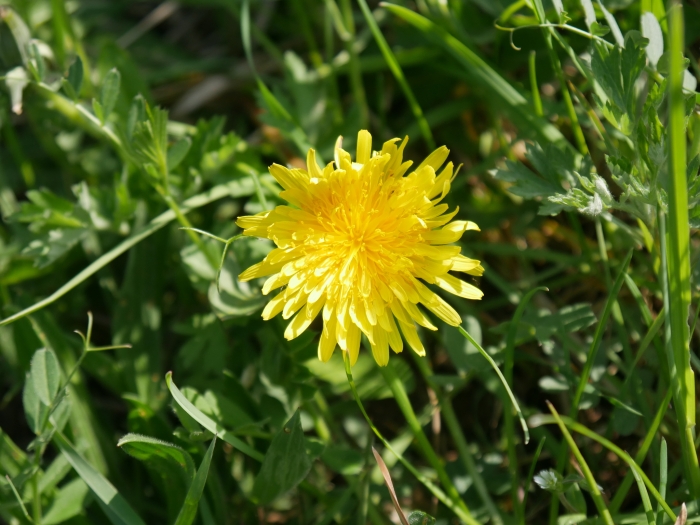Common Dandelion
(Taraxacum officinale)
Common Dandelion (Taraxacum officinale)
/
/

Alexis
CC BY 4.0

















































Estimated Native Range
Summary
The Common Dandelion is valued for its nutritional and medicinal properties, with leaves that can be eaten in salads or cooked, and roots that are used in herbal medicine. It is also appreciated by wildlife, providing an early source of nectar for pollinators. In cultivation, it adapts to a wide range of conditions but prefers full sun to part shade and medium water availability. It thrives in soils with slow to medium drainage. While it is easy to grow, it can become problematic due to its vigorous reproductive strategy, with seeds that can spread widely and a deep taproot that makes it difficult to eradicate once established. It is considered invasive in some regions, so caution is advised when planting it outside its native range.CC BY-SA 4.0
Plant Description
- Plant Type: Herb
- Height: 0.2-0.5 feet
- Width: 0.2-0.5 feet
- Growth Rate: Moderate
- Flower Color: Yellow
- Flowering Season: Spring
- Leaf Retention: Deciduous
Growth Requirements
- Sun: Full Sun, Part Shade
- Water: Medium
- Drainage: Slow, Medium
Common Uses
Bee Garden, Bird Garden, Butterfly Garden, Edible*Disclaimer: Easyscape's listed plant edibility is for informational use. Always verify the safety and proper identification of any plant before consumption., Low Maintenance, Showy Flowers
Natural Habitat
Native to Eurasia and naturalized in many parts of the world, including forests, grasslands, and urban environments
Other Names
Common Names: Blowball, Dandelion, Faceclock, Wiesenlöwenzahn, Pissenlit, Tawao, Tohetaka, Tohetake, Tohetea, Paardenbloem
Scientific Names: , Taraxacum officinale, Taraxacum vulgare, Leontodon taraxacum, Taraxacum taraxacum, Taraxacum dens-leonis subsp. officinale, Leontodon officinalis, Chondrilla taraxacum, Crepis taraxacum,
GBIF Accepted Name: Taraxacum officinale Weber ex Wiggins